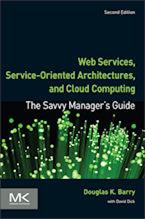Relational Schema for Example
The following figure shows the relational schema for this example. Employee in this example includes teachers and support personnel. Teachers include instructors, professors, and graduate students in a workstudy program. In this example, one set of type codes is used for all these types of employees.
There are two intersection entities in this schema: Student/Course and Employee/Course. These handle the two many-to-many relationships: 1) between Student and Course, and 2) between Employee and Course. In the first case, a Student may take many Courses and a Course may be taken by many Students. Similarly, in the second case, an Employee (one of the types of Teachers) may teach many Courses and a Course may be taught by many Teachers. Also see more on many-to-many relationships.

Employee Table. Also see the related content below.
Context for Relational Schema for Example
Related Articles for Relational Schema for Example
Author
Douglas K Barry
Principal
You may use this material for your work or classes. Reprint Policy. Be sure to check the menu at the left for other articles available on this site.
The Savvy Manager's Guide
Douglas K Barry is also the author of a book that explains Web Services, service-oriented architecture, and Cloud Computing in an easy-to-understand, non-technical manner.
Web Services, Service-Oriented Architectures, and Cloud Computing: The Savvy Manager's Guide (Second Edition)
by Douglas K Barry with David Dick
This is a guide for the savvy manager who wants to capitalize on the wave of change that is occurring with Web Services, service-oriented architecture, and—more recently—Cloud Computing. The changes wrought by these technologies will require both a basic grasp of the technologies and an effective way to deal with how these changes will affect the people who build and use the systems in our organizations. This book covers both issues. Managers at all levels of all organizations must be aware of both the changes that we are now seeing and ways to deal with issues created by those changes.

